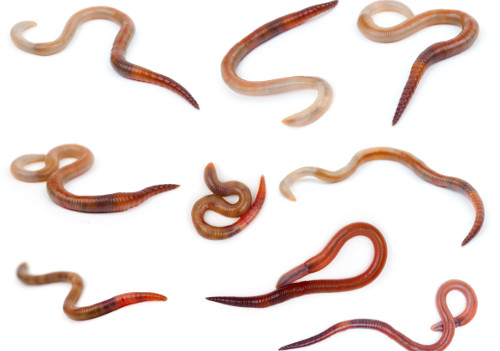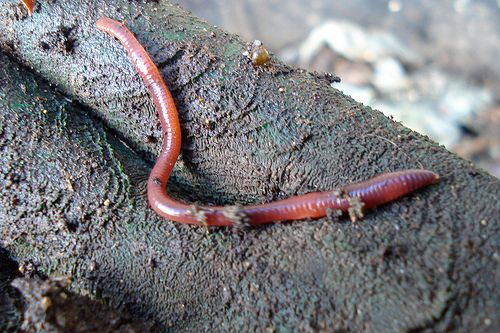Red Wiggler Worms - Perfect for Vermicomposting and Dirt Enrichment
Red Wiggler Worms - Perfect for Vermicomposting and Dirt Enrichment
Blog Article
Red Wiggler Worms Demystified: Opening the Tricks of Vermiculture for Greener Living and Nutrient-Rich Soil
In the realm of lasting practices for improving soil top quality and advertising eco-conscious living, red wiggler worms play a pivotal yet usually ignored role. Red Wiggler Worms. Recognizing the complexities of caring for these worms, optimizing their setting, and harnessing their spreadings can lead to a greener lifestyle and healthier dirt for plants to thrive.
The Duty of Red Wiggler Worms
Red Wiggler worms play a crucial duty in composting systems by successfully breaking down raw material into nutrient-rich spreadings. These ravenous eaters consume a range of natural products, such as kitchen area scraps, yard waste, and paper products. As they feed, the worms' digestive system processes break down the raw material into a penalty, dark, and nutrient-dense product known as worm castings or vermicompost.
The spreadings generated by Red Wiggler worms are extremely helpful for dirt health and plant growth. They are rich in crucial nutrients like nitrogen, phosphorus, and potassium, which are crucial for supporting healthy plant advancement. In addition, worm spreadings have advantageous microbes and enzymes that help improve soil structure, increase water retention, and enhance nutrient uptake by plants.
Advantages of Vermicomposting

It boosts soil structure, boosts soil oygenation, and increases dirt dampness retention. Vermicompost likewise enhances the dirt with necessary nutrients like phosphorus, potassium, and nitrogen, advertising plant growth and overall soil fertility.
In addition, vermicomposting supports sustainable horticulture practices by offering a chemical-free and natural option to synthetic fertilizers. Red Wiggler Worms. This eco pleasant technique not just improves the dirt but also assists minimize dependence on hazardous chemicals, promoting a greener and a lot more lasting means of gardening
Setting Up a Worm Bin
When establishing a worm bin for vermicomposting, proper setup is crucial to make sure the success of the composting procedure. The initial step in establishing a worm container is picking a suitable container. This can be a plastic bin or wooden box that offers enough area for the worms to walk around and has appropriate water drainage openings to stop waterlogging. Next, a bed linen material such as shredded newspaper, cardboard, or coconut coir need to be included in the container. This bed linens gives a comfy atmosphere for the worms and helps maintain moisture levels.
After including the bed linen, introduce the red wiggler worms to the bin. It is recommended to begin with a tiny number of worms and progressively raise as they increase. The worms should after that be given with food scraps such as vegetables and fruit peels, coffee grounds, and eggshells. It is necessary to prevent adding meat, dairy products, oily, or salty foods to protect against drawing in pests and developing unpleasant smells.
Consistently check the wetness degrees and temperature in the worm bin to make certain ideal problems for the worms. With appropriate setup and maintenance, the worm bin will successfully transform organic waste right into nutrient-rich garden compost for your plants and yard.
Collecting Worm Castings
To effectively gather nutrient-rich worm castings from your vermicomposting system, a methodical harvesting approach is crucial. When it comes time to gather the worm castings, there are a few key actions to follow to make sure a successful procedure.

Troubleshooting Common Issues
Recognizing and dealing with typical difficulties that may occur Discover More Here during the vermicomposting process is essential for maintaining a healthy and efficient worm container. One usual problem that vermicomposters encounter is overfeeding. Adding excess food scraps can result in an accumulation of wetness and acidity in the worm container, possibly hurting the worms. To avoid this, feed the worms in moderation, making sure that the food scraps are properly broken down before including extra. An additional concern is undesirable odors emanating from the worm container. Foul smells indicate anaerobic problems, commonly brought on by overwatering or inadequate ventilation. To treat this, change the moisture degrees by adding dry bed linens products like shredded paper or cardboard and increase oygenation by redirected here transforming the bed linen on a regular basis.
In addition, if the worm population is decreasing or the worms show up unhealthy, maybe due to environmental stress factors such as extreme temperatures or pH degrees. Keeping an eye on these factors and making needed adjustments is important for the wellness of the worms. By repairing these common problems without delay, vermicomposters can ensure a smooth and successful vermicomposting procedure while keeping a prospering worm population.

Conclusion
In conclusion, red wiggler worms play an essential function in vermiculture by breaking down natural issue into nutrient-rich soil. Establishing up a worm container is vital for effective vermiculture, and gathering worm castings provides valuable garden compost for gardening.
As they feed, the worms' gastrointestinal procedures damage down the natural matter right into a penalty, dark, and nutrient-dense material known as worm spreadings or vermicompost.
The castings generated by Red Wiggler worms are highly advantageous for soil wellness and plant growth. Adding excess food scraps can lead to a build-up of wetness and level of acidity in the worm container, possibly harming the worms.In addition, if the worm population is declining or the worms show up unhealthy, it can be due to ecological stress factors such as severe temperatures or pH degrees. Setting up a worm container is vital for successful vermiculture, and Resources gathering worm castings offers beneficial compost for horticulture.
Report this page